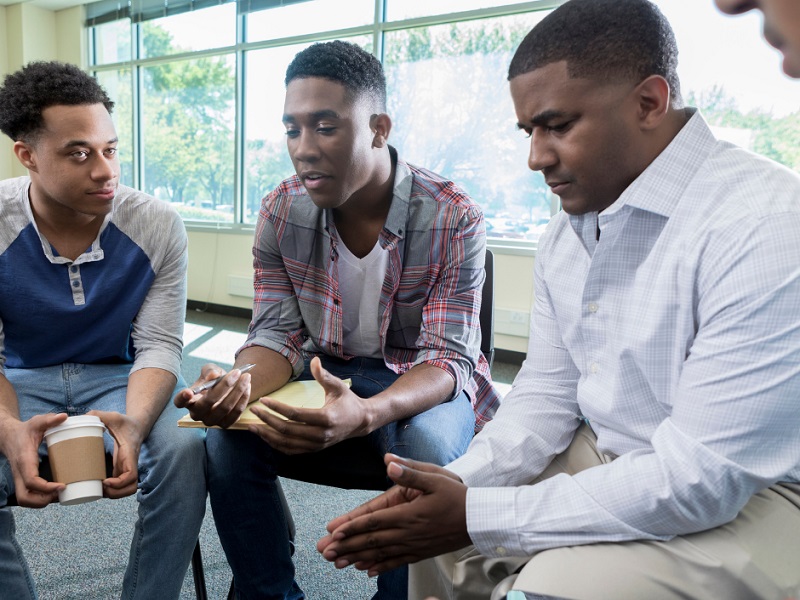The first thing to reflect on is this: Public schools gather everyone. All are invited. There is no test you need to pass, no amount of money or influence or fame you must possess to be allowed in. Do you know how rare that is in the United States today?
This has made public schools the place where people from all backgrounds and circumstances have come together to learn. It is where parents have volunteered and, regardless of their political bent, have worked alongside other parents for a common purpose.
The 20th-century education reformer John Dewey recognized that public schooling was not only about gaining skills and knowledge that would benefit individuals but it also helped prepare youth for a communal role. As scholar Tracy L. Steffes put it in her book School, Society & State: A New Education to Govern Modern America, 1890-1940, Dewey insisted that the “training of democratic citizens would not come from abstract study of government or political obligations but must be rooted in the social relations and experience of the school itself.”
In other words, the experience of school—not just the curriculum or the facts learned—is the thing. That is now under threat from the far right. I have a personal and professional stake in public schools: I am a former PTA mom. I am a volunteer mentor to public school students in grades three to eight. I am an education journalist who has spent more than 30 years writing about K–12 and higher education. I am also the product of K–12 public schools, and even in high school served as a student representative to the New Milford, Connecticut, Board of Education.
Growing up as I did with parents who were practically kids themselves—they were 17 when I was born—school presented itself as a beautiful, steadying force. I had been enrolled in four different school systems by sixth grade. But I could count on teachers, classmates, and the regular hours spent at tan Formica-topped school desks. Each school I attended had its vibe. In one we baked bread to learn math and wrote reports in real black ink with fountain pens. In another, we read the textbook and answered questions at the end of the chapter. But they all had the comforting and familiar rituals that marked a day—homeroom to recess to dismissal—and the year with its marking periods and vacations and much-anticipated field day in late spring.
You got to know kids and became friends, sometimes for simple reasons—like that they said something nice about your lunchbox or you let them borrow a pencil. In high school I learned that the nerdy guys were hilarious and, as my kids would put it, “a good hang.” I suspect their politics were different from mine, but I didn’t know or need to find out. It didn’t matter. What mattered was that they donned handsewn clown costumes to help me out with my Clowns Around business or would listen to the Rolling Stones and talk for hours. I remember being with these same guys in Advanced Placement English, and even though things at home were rough, I thought about how happy I was. It was largely because school worked.
School was the place where, as a kid, I could decide things for myself, including who my friends were, what I cared about, and how hard I was willing to work to succeed. I also learned other things. I would run for class president and lose after one of those guy friends, who was also running, spread a false rumor that I wanted to get rid of music in the cafeteria at lunch (who would actually do that?). It was a lesson in the power of misinformation. He also lost.
A lot happens in school that is not about lesson plans or curriculum. School is about relationships, about people trying to improve themselves and connect with others, and, through those connections, build a community. I find the questions and problems of education riveting. This is why I have spent 30+ years trying to make sense of how schools achieve their goals (or don’t) and the roles they play in our lives. As a journalist, I am not precious or misty-eyed about school. I understand the shortcomings and the trendy ideas that end up broken on the floor.
But the debate across the country right now is not actually about education. It is neither rooted in a passion for the success of all children nor about what skills and knowledge students need to become contributing adults and citizens. It is not even actually concerned with differing beliefs about how we raise our own children and instill in them moral and social values.
Rather, we are witnessing the hijacking of public education by a far-right Christian movement. This is playing out in harsh policies passed by legislatures and local school boards. As a nation we may be committed to principles of access and equity, but some, carrying the flag of “parents’ rights,” are demanding control over which books can be on library shelves, what teachers can say aloud in class, which restrooms transgender students may use, and even whether a teacher may use a child’s preferred name or pronoun in school.
With so much conflict, it can feel as though public education itself is up for renegotiation. And that is the goal. By peppering public schools with attacks, the far right seeks to sow doubt in the fundamental value of public education. Why, they ask, do we need public schools at all? Why not do as Arizona did in 2022—and states like Florida, Iowa, Utah, Arkansas, and others have since embraced—and create Empowerment Scholarship Accounts, a type of education savings account. Such plans put money into an account or on a debit card for parents to spend on education expenses in lieu of sending children to public school. It has triggered a furious conflict over the “privatization” of public education.
This should not come as a surprise. Public schools carry the weight of our cultural differences. Even though, for more than a century, they have been nonpartisan gathering places and a center of civic life in the United States, they have spurred debate. Often, the friction has been over disappointing test scores, funding formulas (do school systems rely too much on property taxes?), or disagreements over how math or history should be taught.
In combing through old magazines, I was struck by how often we have raised alarms about our “troubled” public schools. A headline in the March 1947 issue of Ladies’ Home Journal warns “Our Schools Are in Danger.” A story in the February 1971 issue of Parents’ Magazine could have been written at almost any time in the previous century. Titled “Schools in Trouble,” it promised a “hard-hitting analysis of the failures of public education.”
What is happening now, however, is not your typical debate over the institution’s shortcomings. Rather, this is a move by the far right to use public schools to gain political power. The campaign by extremists ignores the messy job of educating every single child, regardless of background, circumstance, or academic ability. Instead, it seizes on the convenient fact that schools touch everyone. When you control schools, you control society.
In the face of far-right extremist groups like Moms for Liberty, “school moms”—ordinary parents around the country who have made themselves experts in school board policy, library science practice, state legislation, campaign finance, and who have even recruited or run for school board seats themselves—have become our public education heroes. I have watched moms who once (and still do) supply snacks for sports matches and organize wrapping paper fundraisers also start Facebook groups that become 501c3 nonprofits. They are in the fight—for the long haul.
There are key things people who care about public education can do. First: Realize that school boards matter. Mark Sirota, a long-time trustee of the Upper Dublin School District board in Pennsylvania, tells me that his board “draws a pretty hard and fast line between governance and management,” meaning they hire the administrators and “trust them to do their job.” As a result, said Sirota, “Our school board does not really get involved in curriculum. At all.”
But that is not true everywhere. In many locales, he says, “People think that school boards are really all about the curriculum.” Where school boards have been “flipped” to far-right control, activist board members have passed policies restricting teaching materials and library books, mandated policies around bathrooms and pronouns, even controlled what teachers can hang on classroom walls. So it matters to be informed and to vote.
Far-right boards can get installed because of low-voter turnout in elections (I have seen turnouts of less than 10% yield this) or voters being uniformed about candidates, enabling far-right PACs to spend enough to gain name recognition for their picks. Plus: Extremists will show up and vote. It also matters to attend school board meetings and voice support for public education.
Apply the same practice to your state legislature. In the current 2024 session, for example, EveryLibrary identified 65 bills in 22 states representing “legislation of concern” whose passage, they assert, “would allow for criminal prosecution of librarians, educators, higher ed. faculty, and museum professionals.” That does not count bills around vouchers and education savings accounts—or other ways state legislatures threaten school operations. Last May, for example, the Texas legislature passed a law allowing school districts to replace counselors with unlicensed religious chaplains. It is critical to pay attention.
Yet support for public schools begins at the local level. Much has been made of the poor showing last November of candidates backed by Moms for Liberty. Central Bucks School District in Pennsylvania was among the high-profile losses for the extremist group. But it did not happen without tremendous grassroots organizing. Kate Nazemi, co-founder with retired high school English teacher Katherine Semisch of Advocates for Inclusive Education, credited “a movement led by small clusters of women” for flipping the school board back.
Nazemi’s group built a website with resources, constantly shared information about the impact of school board policies, communicated with groups like the ACLU, issued calls to action, and produced informative blog posts and newsletters. Although pro-public education forces succeeded in November, Nazemi said there is no time to rest. “This is precisely when the resistance digs in and makes their plans for how they will flip it in 2025,” she says.
Rather, the organization is using this moment to deepen support for “that delicious goal”—that “all kids deserve to belong, learn, and thrive in outstanding schools”; share the threats; and create a plan for, as Nazemi says, “how we will collectively move together.” One surprising tool to deepen their coalition has been to host welcoming community events like ice cream socials and, recently, candle-making. Crafting, Nazemi says, “is a way into somebody’s heart, and it’s a way for people to feel loved and connected.”
That softness allows people to “share difficult truths,” she says. The aim at events is not to change people’s minds. But the community-building experience offers its own message, which is, she says, “We all do better when everyone does better.”
This is an adapted excerpt from School Moms: Parent Activism, Partisan Politics, and the Battle for Public Education by Laura Pappano. Copyright 2024. Excerpted with permission by Beacon Press








